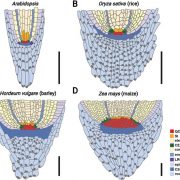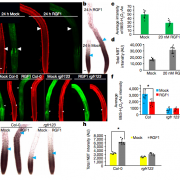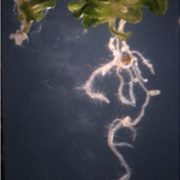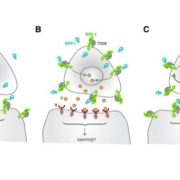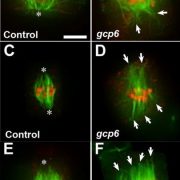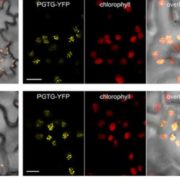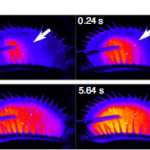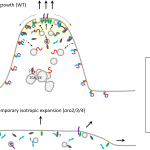Opposing, polarity-driven nuclear migrations underpin asymmetric divisions in stomatal patterning (Curr. Biol.)
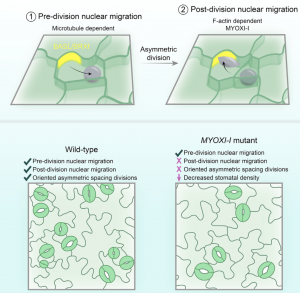 Asymmetric cell divisions (ACDs) are often used by organisms to generate different cell sizes, each adopting a different cell fate. In plants, stomatal development provides an example of an ACD-derived patterning mechanism. Several proteins are known to be implicated in ACDs, like BREAKING OF ASYMMETRY IN THE STOMATAL LINEAGE (BASL) and BREVIS RADIX family (BRXf), which form a polar crescent in the plasma membrane. In this paper Muroyama et al. identified nuclear migration in response to the polarity proteins as an underlying mechanism for the ACD. Using time lapse imaging, the authors identified two nuclear migration events preceding (NMpre) and following (NMpost) the ACD with respect to the polarity proteins BASL and BRXf. These nuclear migrations were lost in the BASL mutant and also in the absence of the polarity crescent. The authors also observed that NMpre and NMpost require microtubules and F-actin respectively and myosin protein (MYOXI-I) is required for the NMpost. Loss of MYOXI-I prevents the NMpost and oriented cell division in stomatal patterning. Summary By (Vijaya Batthula @Vijaya_Batthula) Curr. Biol. 10.1016/j.cub.2020.08.100
Asymmetric cell divisions (ACDs) are often used by organisms to generate different cell sizes, each adopting a different cell fate. In plants, stomatal development provides an example of an ACD-derived patterning mechanism. Several proteins are known to be implicated in ACDs, like BREAKING OF ASYMMETRY IN THE STOMATAL LINEAGE (BASL) and BREVIS RADIX family (BRXf), which form a polar crescent in the plasma membrane. In this paper Muroyama et al. identified nuclear migration in response to the polarity proteins as an underlying mechanism for the ACD. Using time lapse imaging, the authors identified two nuclear migration events preceding (NMpre) and following (NMpost) the ACD with respect to the polarity proteins BASL and BRXf. These nuclear migrations were lost in the BASL mutant and also in the absence of the polarity crescent. The authors also observed that NMpre and NMpost require microtubules and F-actin respectively and myosin protein (MYOXI-I) is required for the NMpost. Loss of MYOXI-I prevents the NMpost and oriented cell division in stomatal patterning. Summary By (Vijaya Batthula @Vijaya_Batthula) Curr. Biol. 10.1016/j.cub.2020.08.100


